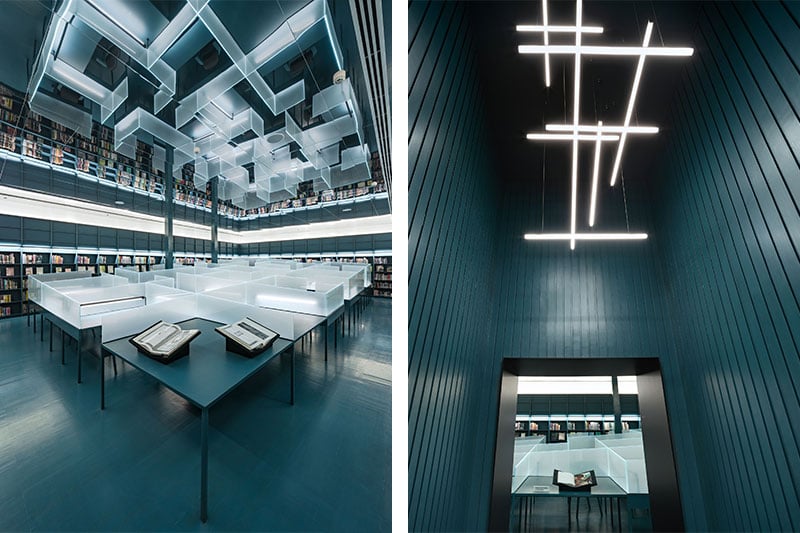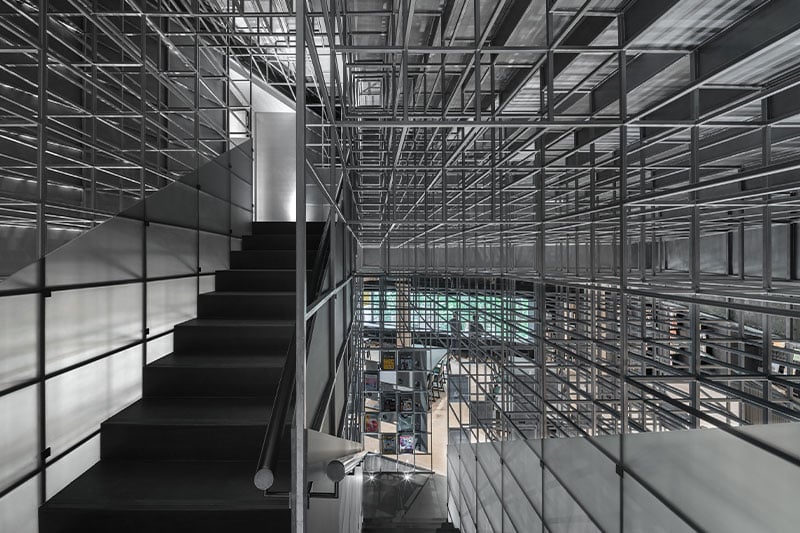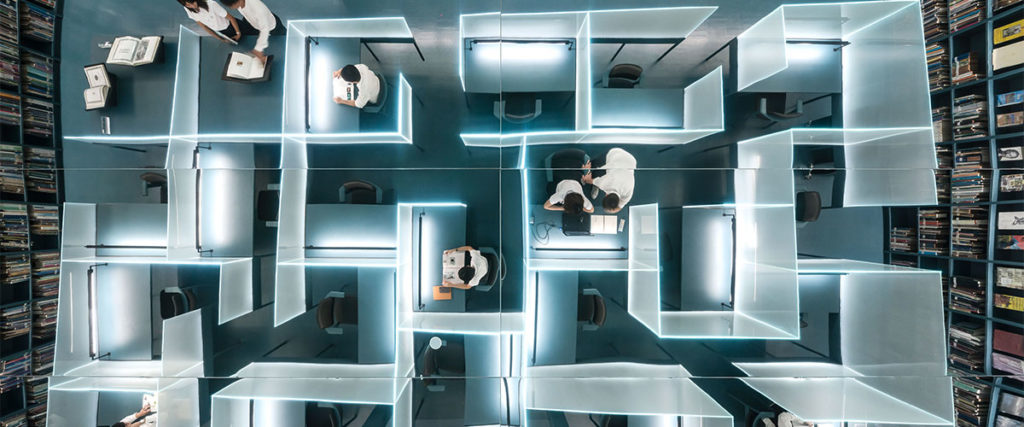What might a library from the future look like? Bangkok-based architecture firm Department of ARCHITECTURE tried to answer that question with a brand new library for Chulalongkorn University.
How do you keep a library relevant when information is so widely available on the Internet? This is the question Bangkok-based design firm Department of ARCHITECTURE asked when they were tasked with designing a new library for Chulalongkorn University. Since then, they’ve created a space that sets out a balance between a traditional library, a digital resource space and a community hub created for the way students work today. Architect Twitee Vajrabhaya Teparkum explains the thinking behind it.

The architecture collective Department of ARCHITECTURE was given the job to re-envisage a library for 21st Century architecture students in Chulalongkorn University in the bustling city of Bangkok in 2019. Founded in 2004 by entrepreneurial duo Twitee Vajrabhaya Teparkum and Amata Luphaiboon, the design firm, which has crafted everything from hotels in China to innovative pavilions in Thailand, prides itself with being open to new interpretations – in this case, what a library might mean, beyond being just a place to keep books.

“We wanted to create an incubation space for students,” explains Twitee of their redesign at Chulalongkorn. The library needed to store a collection of not just physical books, but also digital media. It needed to serve as a learning space for students but in a broader sense that transcends merely a storage space for books. In its new incarnation, the library’s first floor, a grid-like exhibition space likened to a ‘blank canvas’ provides students with the opportunity to curate shows, hang work, and inspire each other. There are TV screens that students can use to display their work, whilst a coworking space provides them with space to work together. To encourage the use of both books and digital media, the former have all been displayed with the covers facing forward to invite readers to pick them up rather than in compressed stacks. Upstairs, the third floor functions as a quiet work zone with carrels configured in a labyrinth-style to minimise noise levels, and a reflective surface on the ceiling gives a top-down view of the work zone. “Another feature is the pixelated seating in the auditorium,” says Twitee. “The space can be rearranged so students can watch a movie or have a lecture. A favourite is the top floor, which features floor seating, so they can relax. Architecture students have this culture of pulling all-nighters and it’s useful to have this space so that they can come to take a nap before going to class and refresh themselves,” she explains of her design choices. Different work environments integrated into the library from quiet spaces to coworking spaces, sofa spaces to floor seating and even a mattress area on the mezzanine level where students can take a power nap have all been installed to create a vibrant learning environment catered to people of all academic styles.
You might also like Duangrit Bunnag: Meet the Architect Redesigning Modern Bangkok

For Twitee, who studied architecture at Virginia Polytechnic and Princeton after leaving Thailand, the project was personal. “I was an alumnus of Chulalongkom University 20 years ago so I know every corner,” says Twitee. “When I was a student, I liked to be in the library, looking through design and technical books. So, I had a deep understanding and was able to propose different kinds of usage. But, I was surprised that a lot of the younger generation liked to sit on the floor when I did my research!” Through that research, she questioned students on whether the Internet had completely phased out the need for physical books at all. “We had to think about the way people were using books and information, and it turns out the Internet and books are quite different. The Internet is very fast and democratic in a way where everybody can post their work, so there’s a wide range of projects. With books, even though they’re slower, there is more in-depth information and analysis, so we actually need both.”

Looking to the future, Twitee predicts that libraries will become more like community spaces rather than simply places to store books and knowledge. “People need to understand the demographic of their users. A library for an architecture school will be different from a library for a law school,” she says. “People need to understand the changes that are occurring. The Internet can’t replace the physical world and how you interact with space, how you feel the light and the people. It is a place for the community to learn not only from books, but also from each other.”
Related Articles
Could 3D Printing Be the Future of Architecture? Singaporean Startup AIRLAB Says Yes.
AI-Driven Architecture Could Be the Future. Meet the Professor Making It Happen.
Struggling to Afford Basic Housing? Micro-Housing OPod Could be the Solution





